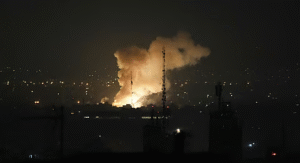A Fragile Truce Undermined: The Perilous Dance of US-China Export Controls
Just weeks after a seemingly hopeful agreement to suspend tariffs, the economic détente between the United States and China is once again teetering on the brink. The emerging reality is that while the overt weapon of tariffs has been temporarily sheathed, both nations are reportedly engaging in a more subtle yet equally disruptive form of economic warfare: export controls. This strategic pivot, aimed at hobbling key industries in the opposing nation, threatens to unravel the fragile truce, pushing the world’s two largest economies back towards a path of escalating antagonism and global instability.

The Illusion of De-escalation: From Tariffs to Targeted Controls
The initial agreement to suspend tariffs was lauded as a much-needed de-escalation, a recognition of the mutual economic pain inflicted by the prolonged trade war. Businesses on both sides of the Pacific breathed a sigh of relief, hopeful for a return to predictable trade relations. However, this optimism appears to have been short-lived. The shift to export controls signifies a deeper, more insidious form of competition, moving beyond mere trade imbalances to directly target the technological and industrial foundations of national power. For the United States, this often translates to restricting China’s access to advanced semiconductors, artificial intelligence components, and other cutting-edge technologies deemed critical for national security and economic leadership. The rationale is clear: by limiting China’s ability to develop its own high-tech industries, the US seeks to maintain its technological advantage and prevent the transfer of sensitive intellectual property.
China’s Counter-Strategy: Leveraging Export Controls for Strategic Advantage
Conversely, China’s reported use of export controls, while perhaps less overtly publicized, is undoubtedly designed to exert leverage and protect its own strategic interests. This could involve limiting the export of rare earth minerals essential for countless modern technologies, or even restricting the flow of specific manufactured goods that the US relies upon. Such actions, while ostensibly defensive, carry significant offensive potential. They force US companies to diversify supply chains, often at considerable cost, and can create bottlenecks that ripple through various sectors of the American economy. The danger lies in this tit-for-tat escalation, where each nation’s defensive measures are perceived as aggressive provocations by the other, leading to a continuous cycle of retaliation.
Far-Reaching Implications: Global Supply Chains and Business Uncertainty
The implications of this renewed struggle are far-reaching. For global supply chains, it means continued uncertainty and the accelerated trend of decoupling, as companies are forced to choose between the two economic giants. This can lead to increased costs, reduced efficiency, and a fragmentation of the global economy. For businesses, the landscape becomes increasingly treacherous, with the constant threat of new restrictions and a need to navigate complex geopolitical considerations alongside market demands. Moreover, this subtle economic warfare risks spilling over into other areas of international relations, potentially souring cooperation on critical global challenges such as climate change, pandemics, and regional conflicts.
Beyond the Truce: A Deeper Current of Rivalry
Ultimately, the reported reliance on export controls as a tool of economic competition underscores the deep-seated mistrust and strategic rivalry that continues to define the US-China relationship. The “truce” achieved through tariff suspension now appears to be a superficial calm, beneath which the currents of technological competition and strategic containment continue to flow strongly. Unless both nations find a way to address these underlying tensions and establish more transparent and predictable frameworks for economic engagement, the fragile truce will inevitably shatter, unleashing another wave of economic disruption and further jeopardizing the stability of the global order.




















